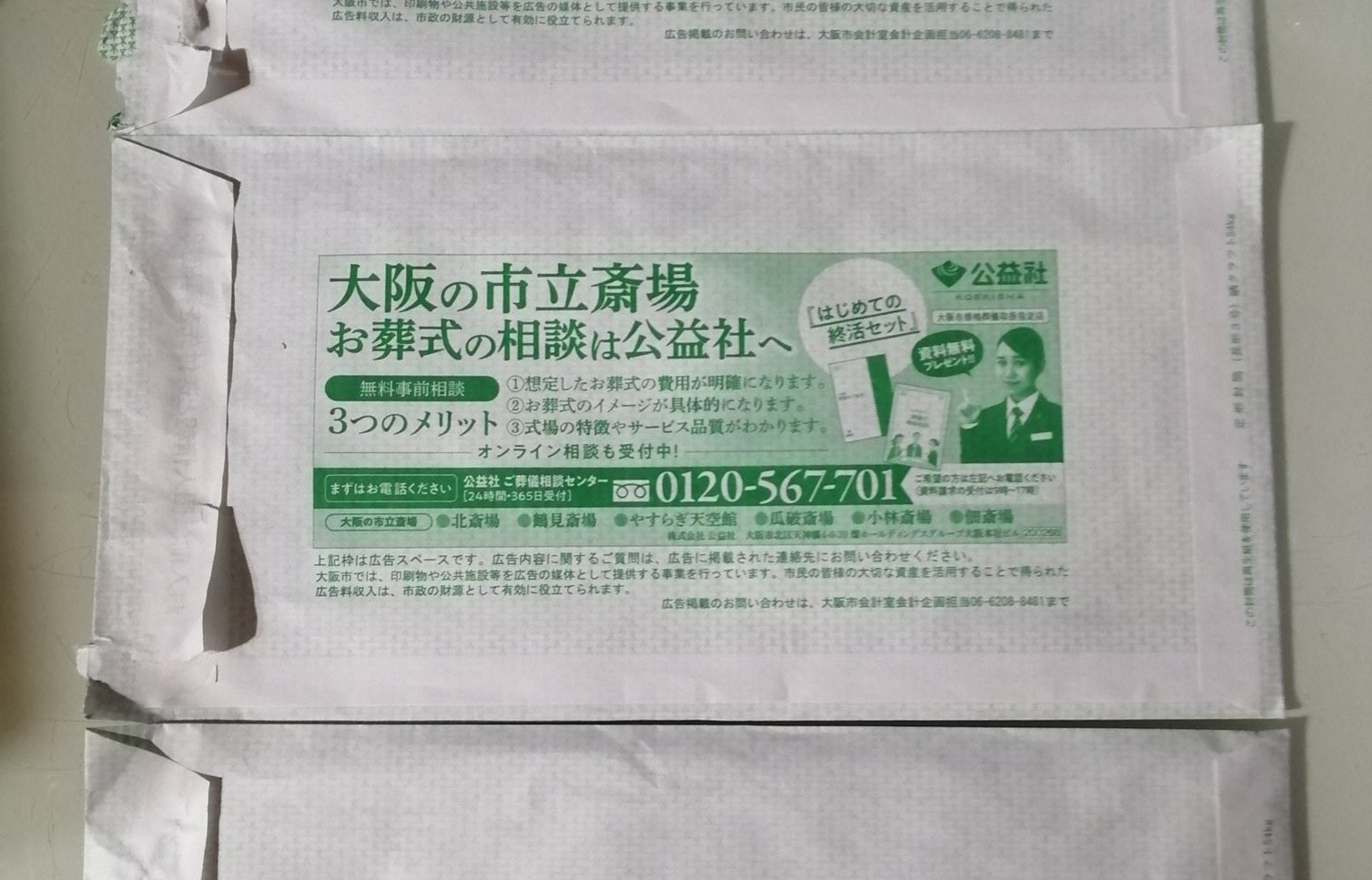Japanese City Accidentally Sends Funeral Ads to People Who May Have COVID
February 4, 2021The mail looks just like what you’d expect during a pandemic: it has information on how to quarantine at home, emergency contact information, and other advice on responding to the COVID-19 crisis.
But those who received the letter, sent by the Osaka government to people under quarantine, were shocked when they saw what’s on the back of the envelope: an ad for funeral services.
Too soon.
The ad placement disturbed some residents in a Japanese city reckoning with its deadliest month of the coronavirus pandemic. One recipient of the letter said it “caused me great grief,” the newspaper Asahi Shimbun reported.

In response to mounting complaints last month, an official from Osaka’s health center apologized, claiming that the ad was “a careless error.”
“Considering how recipients of this mail must have felt, we sincerely apologize,” the official was quoted as saying.
The mismatch was the result of a combination of oversight and enterprise. In an attempt to create new revenue streams, the Osaka city government in 2006 began selling ad space on envelopes used in official mails.
The latest ad placement was bought by Osaka Municipal Funeral Hall, which ordered 600,000 printed copies.
The revenue scheme hadn’t been popular even before the recent snafu.
For every 200,000 letters, the city only makes ¥100,000 ($950). Ami Sato, a homemaker in her 50s who received the funeral ad, said it was simply not worth it.
“I don’t think it’s right that for merely ¥100,000, residents should be made to feel this way,” she told VICE World News. “I don’t think private advertisements are suitable for administrative envelopes in the first place.”
The phone number on the ad, 5-6-7, also raised eyebrows. In Japanese, 5-6-7 can be read as go-ro-na, which sounds like the virus.
The idea of putting ads on the back of government envelops came from economic reforms in 2006, a year after a local TV channel aired a program showing the excesses of Osaka’s bureaucracy.
Traffic conductors who worked 4 hours a day were paid ¥10 million (about $95,000) a year, more than twice the average Japanese worker. Trade union officers who never showed up to work and got paid anyway. And the report detailed other corrupt officials who were using city taxes for personal gain.
The ensuing popular backlash highlighted the income gap between bureaucrats and citizens, who were then struggling to recover from the 1995 Great Hanshin earthquake.
The report prompted Junichi Seki, the mayor of Osaka at the time, to introduce a number of economic reforms. Envelope advertising was one of his ideas.
Now, to prevent further mishaps, the city health center has told other departments to use blank envelopes, or envelopes with other ads, when sending coronavirus-related documents.
Alternatively, the letter’s recipients can try looking on the bright side.
